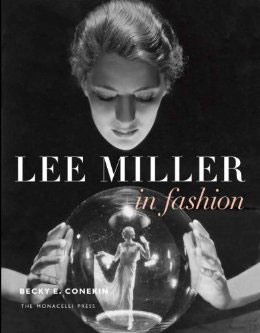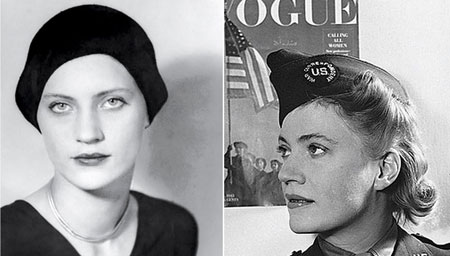Lee Miller, one of the most perceptive photographers of the 20th century, epitomizes freedom, and I mean freedom of choice in every respect. She always did what she wanted to do. Whether she was shooting the atrocities of World War II or the latest collections from Paris, her eye was unflinching. A new book, Lee Miller in Fashion, looks back on the photographer, model and muse’s audacious life.

It was in the fashion world — where she worked both in front of and behind the lens — that this stunning, boundary-breaking woman got her start. But Miller was not content with her role as a beautiful young thing. After two years of modeling and studying Steichen’s methods, she decided to “enter photography by the back end,” as she told a journalist many decades later, clearly aware of how kinky her words sounded.
Miller, says the biography’s author Becky E. Conekin, would go on to find fame as a war correspondent and a surrealist artist, best known for the photographs she took in Europe during World War II and her friendships with artists like Man Ray (her mentor and lover in the late ’20s and early ’30s) and Pablo Picasso (who painted her portrait in 1937).

During the Second World War, Miller became an acclaimed war correspondent for Vogue, covering events such as the London Blitz, the liberation of Paris and the concentration camps at Buchenwald and Dachau. On August 25, 1944, when French and American forces liberated Paris, Miller headed straight there and was struck by the surprisingly ubiquitous smell of perfume. The young women, she wrote, were “dazzling,” with their makeup-free faces, flowing hair, and “tiny waist-lines” in “full floating skirts.”
Here’s a collection of intimate Lee “Elizabeth” Miller Picasso photographs. Some of these images have become so well-known that they are etched onto the popular imagination, even if very few people are actually aware that it was Lee Miller who took them:
After the war, Miller started to suffer from severe episodes of clinical depression and what later became known as post-traumatic stress syndrome. Miller rarely talked about her war experiences but they inevitably had harsh effects on her health, family and life.
By 1953, Miller had stopped working entirely. And yet, in her final years, she was still very much in demand. Addressing the many requests for photographs that came her way, Miller, who died in 1977 of cancer, would claim that they had been destroyed during the war and were best forgotten. “Oh, I did take a few pictures,” she would say. “But that was a long time ago.”
Kind of like Henri Cartier-Bresson who in his last years didn’t want to have anything to do with photography. Sebastião Salgado had a similar breakdown. Who knows, they might have been too close to what they witnessed.
You can order “Lee Miller in Fashion” from Amazon.



